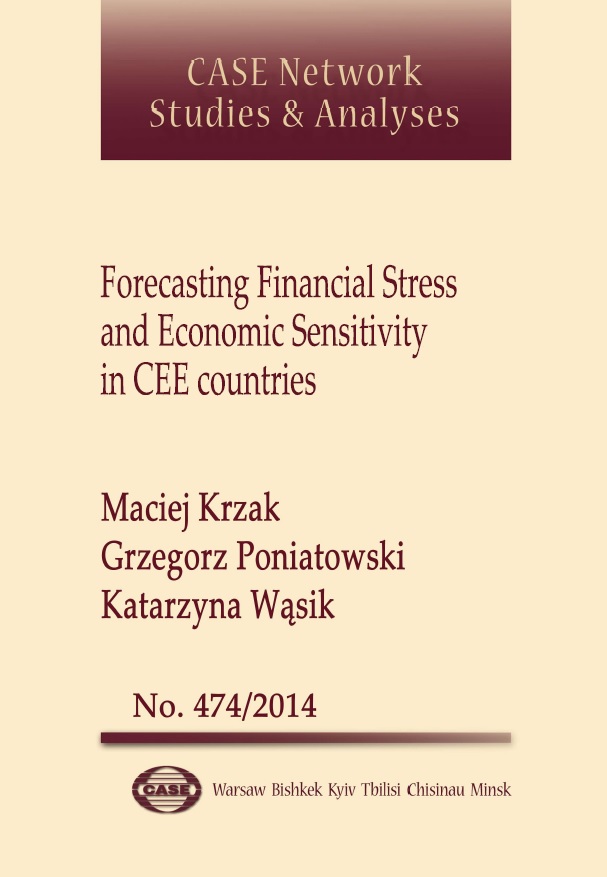Forecasting Financial Stress and the Economic Sensitivity in CEE Countries
 Two unobservable phenomena, financial stress and economic sensitivity, have an important effect on the economic situation of a country. Economic sensitivity is defined as a lack of both balanced economic growth and a lack of stability of public finances. Financial stress is a disruption of the normal functioning of the markets, in that: large shifts in asset prices, an abrupt increase in risk and uncertainty about the value of assets, liquidity droughts, and concerns about the health of the banking system.
Two unobservable phenomena, financial stress and economic sensitivity, have an important effect on the economic situation of a country. Economic sensitivity is defined as a lack of both balanced economic growth and a lack of stability of public finances. Financial stress is a disruption of the normal functioning of the markets, in that: large shifts in asset prices, an abrupt increase in risk and uncertainty about the value of assets, liquidity droughts, and concerns about the health of the banking system.
In this report the authors present forecasts of the Financial Stress Index (FSI) and the Economic Sensitivity Index (ESI) for the year 2014 and 2015. Forecasting economic sensitivity and financial stress is a continuation of the endeavor to construct synthetic indices, the FSI and the ESI, for twelve Central and Eastern European countries (CEECs) in the period 2001-2012.
The goal of the previous stage of work was to capture key features of financial and economic vulnerability, and to examine the co-movement of economic turmoil and financial disturbances that strongly affected the CEECs over the last decade. The promising results of the study prompted the authors to develop the index further, in a way which would allow for conducting not only retrospective analyses, but also forecasting.
Using the Principal Component Analysis method, the authors examined whether the variability of these factors could be explained by the variability of unobservable principal components that could be associated with financial stress and economic sensitivity. To construct the ESI, they used the main macroeconomic variables: a deviation of GDP growth from the long-term trend, the inflation rate, the debt structure (the ratio between external government debt and total government debt), foreign currency reserves (as a ratio to GDP) and the detrended current account balance (in order to estimate financial stress we took financial market and banking sector data into consideration). Model variables consisted of: conditional volatility of the stock market indices, stock market liquidity, long-term interest rates (10 year treasury bond yields), the conditional volatility of the national currencies, the interbank rate spread, long-term financial liabilities in the banking sector, and the world economic climate (WEO published by the IFO Institute).
The analysis confirms that the global financial crisis had a sudden and significantly negative impact on all CEECs. Overall, the constructed indices are an evidence that a synthetic measurement that monitors both financial markets and the evolution of economic stability can offer a clear picture of the systems’ vulnerabilities.
This report was prepared by Maciej Krzak, Grzegorz Poniatowski and Katarzyna Wąsik within a research project: Financial Stress Index and Economic Sensitivity Index. The publication was possible thanks to the donation granted by Bank PEKAO S.A.

